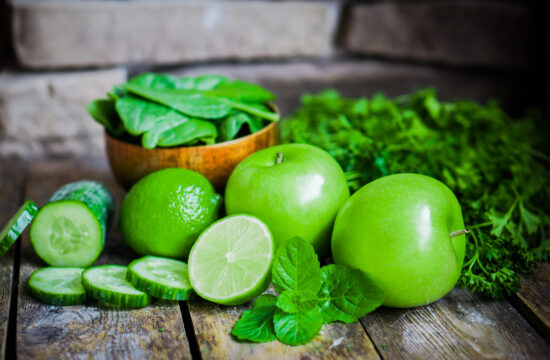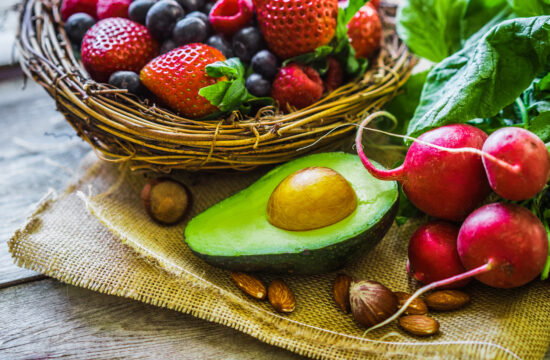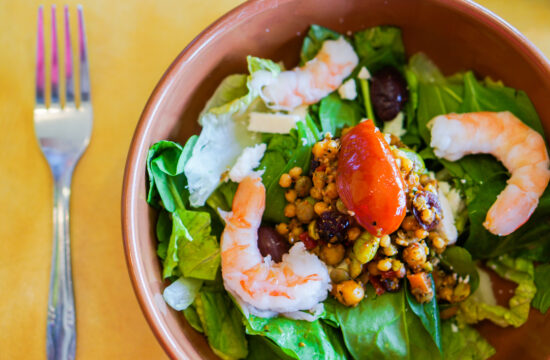Start by Being Present During Meals
Set the Scene
One of the first things I discovered about mindful eating is the importance of my surroundings. When I sit down to eat, I try to create a peaceful environment. This means turning off the TV, putting my phone away, and maybe even lighting a candle. It’s all about making the meal a special event, rather than just a task to tick off my checklist.
When I’m more present in the moment, I start to notice the little details of my food—its colors, textures, and aromas. This sensory engagement not only enhances my enjoyment but also helps me slow down. It’s amazing how much more I appreciate a meal when I fully focus on it.
Need a Strong Nutrition Boost for Your Diet? Take a Look...
So, don’t overlook your dining space! The ambiance can truly transform your eating experience into something meaningful, engaging, and, ultimately, more satisfying.
Take Your Time
In our super-fast-paced world, it’s easy to rush through meals. However, I’ve learned the value of slowing down. Taking smaller bites and chewing my food thoroughly is not just kind to my digestive system; it allows me to savor every moment. There’s something wonderfully fulfilling about stretching a meal out instead of shoveling it in.
During meals, I consciously pause between bites. This means I put my fork down and engage in conversation or simply observe my surroundings. It’s a great way to reconnect with those around me and appreciate each flavor without distraction.
Plus, taking my time helps me tune into my hunger signals. By the end of the meal, I usually know exactly when I’ve had enough, which has greatly reduced my tendency to overeat.
Need a Strong Nutrition Boost for Your Diet? Take a Look...
Listen to Your Body
Mindful eating has also taught me to listen to my body better. How often have I eaten out of boredom, stress, or just because it was ‘time’? These days, I try to check in with myself before eating. Am I truly hungry, or am I snacking because I’m feeling something else?
I’ve started paying closer attention to how different foods make me feel. After a meal, I take note of my energy levels, mood, and any discomfort. This feedback loop helps me make better choices moving forward. Now, I can differentiate between genuine hunger and emotional cravings, guiding me towards healthier habits.
Learning to listen to my body is a game-changer. It may take some practice, but the more I do it, the easier it becomes to choose what truly nourishes me.
Engage Your Senses
Visualize the Experience
When I sit down to eat, I like to take a moment to really appreciate the food in front of me. The colors, arrangement, and even the plating of the meal can be visually appealing. I take notice of how the meal looks and think about the ingredients that went into it. This builds anticipation and excitement around the meal.
Visualizing my food encourages me to be grateful for it. Rather than just foraging through the meal, I reflect on where these ingredients came from and the effort involved in preparing it. It adds a deeper layer of enjoyment and mindfulness.
Taking that visual approach can elevate even the simplest of meals into something extraordinary. It’s like preparing for a show instead of just eating food.
Focus on the Flavors
As I delve into every bite, I cultivate an awareness of the flavors that dance across my palate. I try to identify each flavor—sweetness, saltiness, spiciness—and what ingredients contribute to them. It’s like being a chef in my own mind, appreciating the complexity of my meal.
Engaging my taste buds in this way not only heightens my eating experience, but it also encourages me to choose a variety of foods. I find that I often gravitate towards colorful, flavorful dishes as I enhance my awareness of how flavors can affect my mood and satisfaction.
This exploration of flavors has been a delightful journey and has encouraged me to experiment in my own kitchen, trying out different spices and food pairings I may have never thought to combine before.
Mindful Breathing
Before digging into my meals, I like to take a few moments for mindful breathing. This practice helps me relax and shift my focus entirely onto the meal at hand. I’ll take a couple of deep breaths, allowing my mind to settle and signal to my body that it’s time to enjoy this nourishment.
Breathing mindfully not only centers me but also has the added benefit of improving digestion. When I’m calm and relaxed, my body is better prepared to process the food. Who would’ve thought that a simple deep breath could enhance my eating experience?
This brief pause transforms my eating, making each meal feel intentional rather than just another routine task. I encourage everyone to give it a try!
Create a Healthy Relationship with Food
Avoid Labels
One of the best tips I’ve adopted is to steer clear of labeling foods as ‘good’ or ‘bad.’ This mindset shift has helped me change how I view food entirely. Instead of seeing certain things as off-limits, I focus on balance and moderation. Learning to appreciate all kinds of food has truly opened my culinary horizons.
This shift in perspective means I allow myself treats without guilt. When I enjoy a dessert, I try to be fully in the moment, relishing each bite instead of feeling regretful. It’s okay to indulge sometimes; it’s all about the overall balance.
By ditching the labels, I’ve created a much healthier and happier relationship with food. I no longer fear it; instead, I respect it and enjoy it for all it has to offer.
Good HealthY DIETING Solution is Easier Than Most People Think!
Take a Look for Yourself!
Practice Gratitude
Gratitude has been key in my mindful eating journey. I like to take a moment before eating to express thanks for my meal, the Earth, and all the people involved in bringing it to my table. This attitude enriches my dining experience and creates a deeper connection to the food.
By incorporating gratitude, I cultivate appreciation for the flavors, nutrients, and effort involved. It reminds me that every meal is more than just sustenance—it’s an experience, a connection to nature and the people around us.
This practice also helps to curb the need for excessive portions as I savor the meal more fully, recognizing that each bite holds value and meaning.
Journaling Your Journey
Keeping a mindful eating journal has been a game-changer for me. I jot down my meals, ideas around food, feelings, and physical sensations. This simple act has made it easier to track not just what I eat, but how it makes me feel.
Writing has been therapeutic. It encourages me to reflect on my habits and recognize patterns in my eating behaviors. Am I reaching for comfort foods during stressful times? Understanding these patterns helps me adjust and find healthier ways to cope.
Plus, it serves as a personal record of my journey towards more mindful eating. I can look back and see how far I’ve come, which is motivating in itself!
Stay Consistent and Patient
Start Small
When I first jumped into mindful eating, it felt a bit overwhelming. So, I took a step back and decided to start small. I focused on one meal a day, setting the intention to be more present and engaged. Whether it was breakfast or dinner, I made a point to ensure that one meal was about mindfulness.
As I gradually became comfortable, I expanded this focus to every meal. This approach made the transition feel manageable and enjoyable rather than forced. What I’ve found is that small changes really do add up over time.
So, don’t feel pressured to overhaul your entire eating pattern at once. Embrace the process and enjoy each small victory along the way!
Be Patient with Yourself
Mindful eating isn’t a switch I can flip on overnight; it’s been a journey filled with ups and downs. Sometimes, I catch myself slipping back into old habits, and that’s totally okay! It’s important to remind myself that it’s all part of the process. I give myself grace and encourage anyone else to do the same.
Each day is a new opportunity to practice. It’s about improving little by little rather than aiming for perfection. When I embrace this mindset, I find that I enjoy the journey even more.
Remember, patience isn’t just a virtue—it’s crucial in developing a mindful eating practice.
Celebrate Progress
Finally, I believe in celebrating progress, no matter how small. After a period of consistently practicing mindful eating, I take a moment to reflect on the overall improvement in my relationship with food. Whether it’s improvements in my digestion, satisfaction, or simply enjoying food more, acknowledging these wins boosts my motivation.
Celebrating progress doesn’t mean just fixing a milestone but appreciating the daily victories too. I often share my experiences with friends, and this builds a supportive community around mindful eating.
So, keep a lookout for improvements, both big and small, and give yourself credit. You deserve it!
FAQs
What is mindful eating?
Mindful eating is about being fully present during meals, paying attention to the sensory experience, and understanding your body’s hunger and satiety signals. It’s about enjoying food without distractions and being aware of what you’re eating.
How can I start incorporating mindful eating into my life?
Start small by focusing on one meal a day. Create a peaceful environment, engage your senses, and take time to savor each bite. Gradually, extend these practices to all meals as you become more comfortable.
Can mindful eating help with weight loss?
Absolutely! By being more aware of hunger and fullness cues and making more conscious food choices, many people find they naturally eat less and choose healthier options, leading to weight loss.
What if I don’t have time for mindful eating?
Mindful eating is about quality over quantity. Even in a busy schedule, you can take a few moments to breathe and appreciate your food before diving in. It doesn’t have to be a lengthy process!
Is it normal to struggle with mindful eating?
Yes, many people find it challenging at first. It takes practice to develop this awareness, so be patient with yourself. Each effort you make is a step toward improving your relationship with food.












